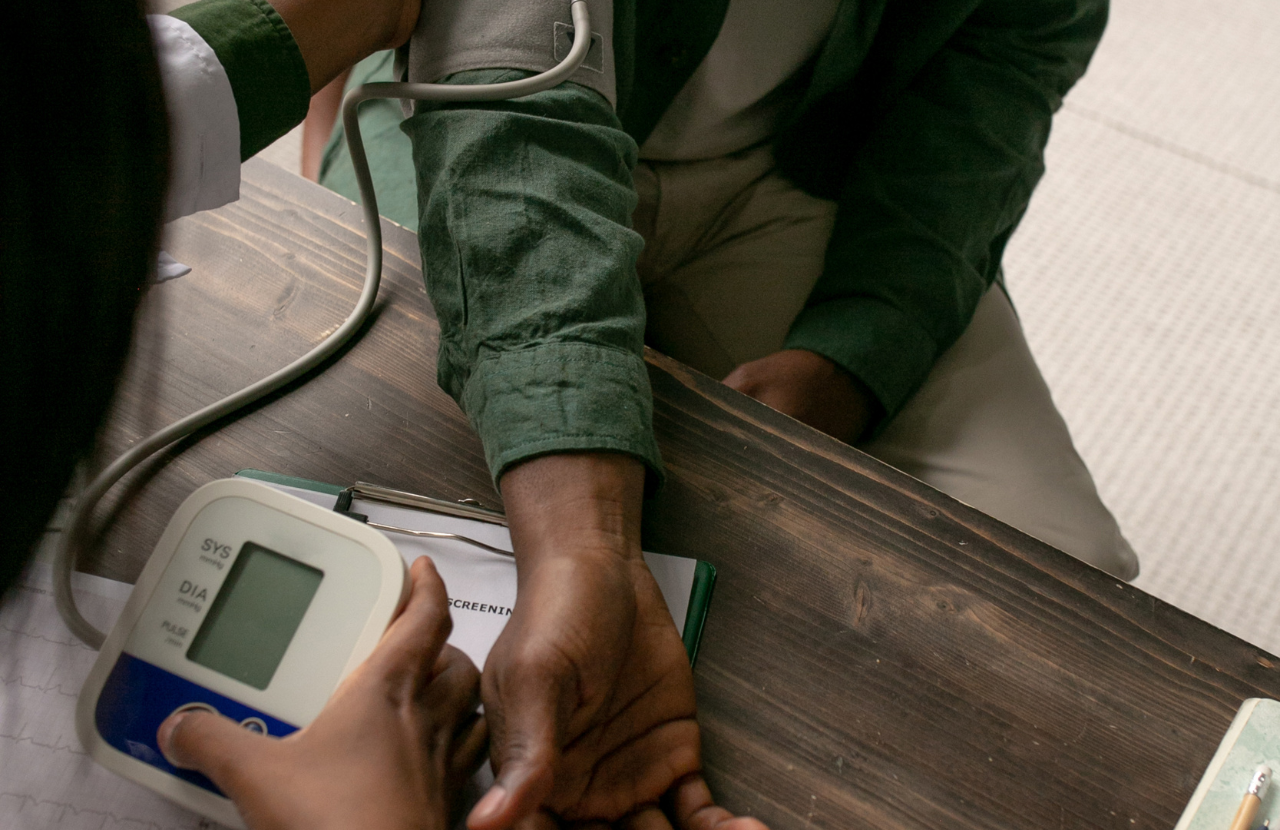
In this guide, we explore why health surveillance is important, when it is legally required, the types of checks employers may need to carry out, and what a structured programme should involve.
You will gain a clear understanding of how health surveillance helps you stay compliant with the law, safeguard employee wellbeing, reduce long-term risks, and build a healthier, more resilient workforce.
What is health surveillance in occupational health?
Occupational health surveillance is a structured process of regularly monitoring employees’ health to identify early signs of work-related conditions. It focuses specifically on tracking the impact of workplace exposures, such as dusts, chemicals, vibration, or noise, rather than general lifestyle or medical issues.
The purpose of health surveillance is to detect whether workplace hazards are causing harm before the effects become serious or permanent. For example, lung function tests can reveal early breathing difficulties in workers exposed to respiratory hazards, while hearing tests can detect gradual changes caused by noise exposure.
By comparing results over time, trends can be identified that might not be obvious in a one-off check. This provides an early warning system that protects employees, highlights when control measures need to be introduced or adapted and supports ongoing improvements in workplace safety.
Why is health surveillance important?
Here are reasons why health surveillance is important in the workplace:
Identifies early signs of work-related ill health
Regular assessments help spot emerging health issues before they escalate. Health surveillance reduces the risk of potential health problems for the workforce, so conditions are identified and addressed at the earliest opportunity.
Reduces employee turnover
By actively monitoring employees, organisations display a visible commitment to wellbeing. Studies show that employees who feel their health is supported stay longer. Companies with strong health-focused cultures see turnover rates up to 11 percentage points lower than those doing the least.
Reduces sickness absence and improves productivity
Comprehensive workplace health programmes (which include occupational health surveillance) are associated with 25–30% reductions in absenteeism costs. At the same time, research from the University of Oxford demonstrates that happier, healthier employees are 10–13% more productive.
Demonstrates proactive risk management
Health surveillance provides visible assurance that risks are being actively monitored and controlled. The Health and Safety Executive highlights that surveillance is designed to “check the effectiveness of measures to control risks” and to provide data that helps employers evaluate health hazards.
In practice, this transparency reassures employees that their wellbeing is prioritised and demonstrates to regulators and clients that risks are being managed responsibly.
Is health surveillance a legal requirement in all workplaces?
Health surveillance is a legal requirement in the UK where employees face specific risks. The overarching duty comes from the Health and Safety at Work etc. Act 1974 (HSWA), which requires employers to protect the health, safety, and welfare of their workers. While HSWA itself does not explicitly mention “health surveillance,” it provides the foundation for more detailed regulations that do.
Several key pieces of legislation set out when health surveillance must be provided:
- Control of Substances Hazardous to Health Regulations 2002 (COSHH) – Regulation 11: requires health surveillance where exposure to hazardous substances could cause conditions such as asthma or dermatitis.
- Control of Asbestos Regulations 2012 – Regulation 22: mandates medical surveillance and health record-keeping for any employees exposed to asbestos, with records retained for 40 years.
- Control of Vibration at Work Regulations 2005 – Regulation 7: requires appropriate health surveillance where workers are at risk of conditions such as hand-arm vibration syndrome (HAVS).
- Control of Noise at Work Regulations 2005 – Regulation 9: requires health surveillance, including hearing checks, where there is a risk of noise-induced hearing loss (NIHL).
- Control of Lead at Work Regulations 2002 – Regulation 10: requires medical surveillance for employees exposed to significant levels of lead, with long-term health record-keeping.
This means health surveillance is not a blanket requirement for every workplace. Instead, it applies in higher-risk environments where hazards like asbestos, noise, vibration, or hazardous substances are present.
For low-risk workplaces, routine health checks are not a legal obligation, although some employers choose to implement them as part of a broader wellbeing strategy.
The Health and Safety Executive (HSE) is clear that employers are expected to carry out risk assessments and, where these risks are identified, put in place a structured health surveillance programme to ensure both legal compliance and the protection of workers.
HSE health surveillance guidance
The Health and Safety Executive (HSE) provide comprehensive guidance on when and how employers must carry out health surveillance.
HSE’s approach is rooted in the principle that surveillance is only required where there is an identifiable health risk that cannot be fully controlled by other measures (for example, exposure to asbestos, vibration, noise, or hazardous substances). Health surveillance should be proportionate to the level of risk and targeted at detecting early signs of work-related ill health.
HSE also has an enforcement role. Inspectors can review an employer’s health surveillance arrangements, examine health records, and interview employees. If legal requirements are not met, HSE has the power to issue improvement or prohibition notices or pursue prosecutions where necessary.
Methods of health surveillance
A health surveillance programme uses a combination of techniques to monitor employees’ health over time:
- Questionnaires – simple, structured forms used to gather information about symptoms or changes in health that may be linked to workplace exposures.
- Clinical assessments – examinations by a qualified occupational health professional, such as skin inspections for dermatitis or medical consultations for respiratory conditions.
- Functional tests – objective tests that measure how well a body system is working, for example lung function tests for employees exposed to dusts and fumes or hearing tests (audiometry) for workers in noisy environments.
- Biological monitoring – measuring levels of hazardous substances or their metabolites in blood, urine, or breath. This can detect exposure to substances such as lead, isocyanates, or solvents even before symptoms appear.
Types of occupational health surveillance
A structured health surveillance programme can take several different forms depending on the workplace risks identified. Key types include:
Baseline health assessments
Baseline health assessments are carried out when an employee starts a role with known health risks, providing a benchmark for future checks. These are often required where exposure is anticipated under regulations such as COSHH 2002 (Reg. 11) or the Control of Asbestos Regulations 2012 (Regulation 22).
Periodic checks
Periodic checks are regular assessments to detect early signs of work-related ill health. Examples include:
- Lung function tests for workers exposed to dusts or fumes (COSHH).
- Hearing tests for employees exposed to high noise levels (Noise at Work Regulations 2005, Regulation 9).
- Skin checks for workers handling hazardous chemicals (COSHH).
Exit health checks
Undertaken when an employee leaves a role involving exposure to significant risks, exit health checks ensure any health changes are documented and records are maintained as required (e.g. asbestos surveillance records must be kept for 40 years under the Control of Asbestos Regulations 2012, Regulation 22).
What is a health surveillance programme?
A health surveillance programme is a structured, legally defined process for monitoring employee health when workplace risks cannot be fully controlled. These are the steps involved:
Risk assessment
The starting point of any programme is a suitable and sufficient risk assessment. This identifies hazards such as COSHH hazardous substances, asbestos, vibration, or noise that could lead to occupational diseases.
If the risk assessment shows that health risks remain despite control measures, health surveillance must be introduced.
This step links directly to the employer’s duty to carry out ‘suitable and sufficient risk assessments’ under the Management of Health and Safety at Work Regulations 1999 and sets the scope for the surveillance programme.
Planning
Once risks are identified, the employer must plan an appropriate health surveillance programme tailored to the hazards. For example, baseline health assessments, periodic checks or biological monitoring (see ‘Types of occupational health surveillance’ above).
Implementation
Health surveillance must be carried out by competent occupational health professionals. This may include occupational health nurses, physicians, or doctors.
Each health and safety regulation specifies who should carry out health surveillance. For example, the Control of Asbestos Regulations 2012 (Regulation 22) requires that “Every employee… shall be under adequate medical surveillance by a relevant doctor.”
Please see the section above, ‘Is health surveillance a legal requirement in all workplaces?’ for a list of the different regulations.
Implementation involves carrying out the agreed health surveillance procedures — such as lung function testing, audiometry (hearing tests), skin inspections, or biological monitoring — recording and interpreting the results, and ensuring employees are informed about the purpose of the surveillance and the outcomes relevant to them.
Follow-up actions
If health surveillance results indicate potential work-related ill health, follow-up actions may include:
- referring the employee for further medical investigation.
- reporting occupational diseases to HSE under RIDDOR 2013. To find out what employers must report under RIDDOR, please read our article, What is RIDDOR and why is RIDOR reporting important?
- revising and strengthening risk control measures.
- temporarily or permanently reassigning employees to reduce exposure.
Taking prompt and appropriate action safeguards employees and provides evidence that risks are being managed responsibly and proactively.
Review
Health surveillance programmes are not static. Regular reviews are essential to check:
- whether surveillance results highlight patterns or emerging problems.
- if existing workplace controls are effective or need strengthening.
- whether changes in processes or substances create new risks requiring different health checks.
Reviews should involve management and occupational health professionals, with adjustments made to keep the programme legally compliant and proportionate to risk.
Record-keeping
Employers are legally required to maintain health records for employees under surveillance. Health records are simple, non-clinical records kept by the employer (e.g. name, job role, type and date of surveillance, fitness for work outcome).
For certain exposures, such as asbestos, lead and specific substances such as carcinogens, mutagens, and biological agents, employers are legally required to keep health records for at least 40 years because related diseases may take decades to develop. This requirement is set out in the Control of Asbestos Regulations 2012 (Regulation 22[4]), the Control of Lead at Work Regulations 2002 (Regulation 10[5]), and under COSHH 2002 (Regulation 11[5] and Schedule 6).
Proper record-keeping demonstrates compliance and provides long-term data that can be invaluable in defending claims and managing workforce health trends.
Do you need expert support with health surveillance?
Understanding why health surveillance is important provides a strong foundation for protecting your workforce and meeting legal obligations.
At Praxis42, our health and safety consultants can help your organisation develop and implement health surveillance programmes that meet HSE requirements and protect employee wellbeing.
We provide support across risk-based assessments, programme design, record-keeping, and follow-up actions, ensuring your approach is effective and compliant.
To find out how our health and safety consultants can work with your organisation, talk to our friendly team today on 0203 011 4242 / info@praxis42.com

Adam Clarke
Managing Director (Consulting)
